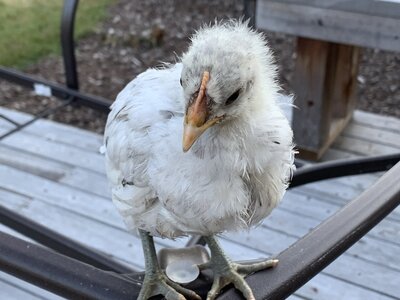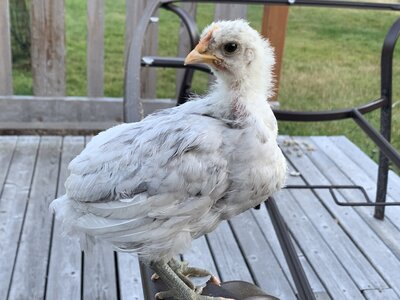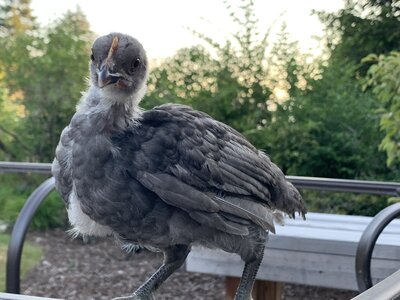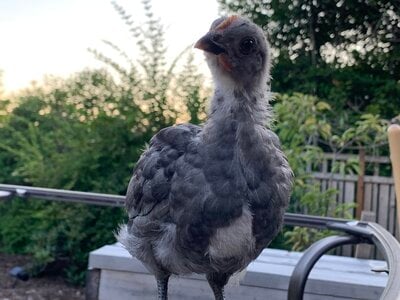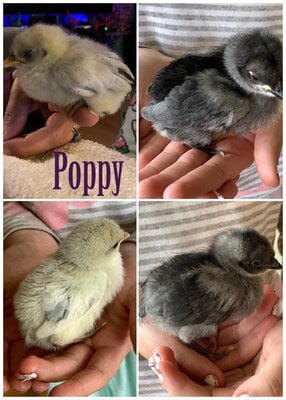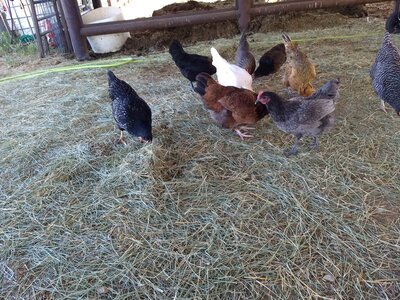- Jun 12, 2018
- 359
- 300
- 201
Poppy is 3 months old! He’s a good boy. Loves treats and to be held. He’s not the alpha cockerel and seems ok with it for now. I also love the dark eyes of Silverudd’s Blues, and it’s a preferred trait.Yes I remember I thought Poppy was a roo too, that’s why I’m not sure Of my splash- it’s comb and wattles are smaller then the black one but the comb is there and honestly if it is a roo I wouldn’t be too sad because it has the nice dark eyes and I could breed it to my blue and splash hens that I have that also have dark eyes and nice legs color and they are amazing layers! I get 6-7 eggs a week from each and they are my favorite eggs with beautiful speckles most days!
how old is poppy now?


 I just can’t figure out why Tristan and this new black roo chick have combs like that??? I’m assuming it’s a comb spur, but don’t know for sure. I just don’t want to breed in a bad trait.
I just can’t figure out why Tristan and this new black roo chick have combs like that??? I’m assuming it’s a comb spur, but don’t know for sure. I just don’t want to breed in a bad trait.